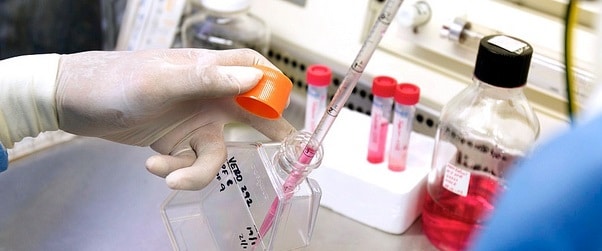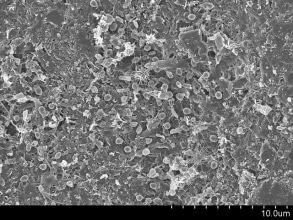Primary cultures of rodent (rat and mice) neurons are widely used for disease modeling and studying cellular mechanisms in neurobiology, using a variety of techniques including neurobiology imaging. If you are in this field and need help with protocols and batch-to-batch variability of your dissociated primary rodent neurons, read further below. Also, consider watching several JoVE (Journal of Visualized Experiments) articles.1-24 These cover most of the basic steps and different protocols out there.
First Think of the Downstream Application
Broadly speaking, the downstream applications of the neurons can be classified into 2 groups. Namely, those for which homogeneity or purity of the neuron culture matters, and those in which homogeneity of the neurons is not an issue. The dissociated neuron culture will always have some amount of non-neuronal, mostly glial (micro- or astro-) cell contamination unless you use a specific enrichment method for getting rid of the non-neuronal cell types.
Note: most of the neuronal serum-free growth media (e.g. Neurobasal/B27) discourages non-neuronal cell growth. However, non-neuronal cell growth also depends on the specific density at which neurons are plated and cultured.
Start with a Fixed Stage of Development
At different embryonic stages of brain development, different parts of the brain contain different amounts of contaminating non-neuronal cell types. So, starting with brains from different embryonic stages – even within a 2-day range is guaranteed to increase variability in your results. Again, reflect upon the tolerance limit for homogeneity of the neuronal culture, given your specific end-point, and choose the brain part (e.g. for cortical, hippocampal or dopaminergic neurons etc.) of interest. Then stick with that specific developmental stage. The idea is to choose a stage in which you can maximize your neuronal yield yet, can comfortably micro-dissect the part of the brain with high confidence. So, size is also a factor here.
Practice and Improve Your Fine Motor Skills
You want your micro-dissection to be fast and precise. Use a good dissection scope, an ergonomic sitting arrangement, and a couple of fine-point (e.g. #5 Dupont) tweezers. Also, keep the brain submerged in pre-chilled buffered saline while dissecting, and practice away. The more you practice, the less time it will take for your dissection, and the more reproducible your results will be.
But, if neuronal culture is a not a long-term project for you, keep in mind, that there are vendors who will ship you the most commonly used pre-dissected parts of rodent brains. However,
a) it is expensive
b) the vendor will ship you the material on only a specific day of the week
c) the viability of neurons is less, and the longer you store them, the worse it gets
d) you need to re-optimize the density of neurons to compensate for the viability issue.
Even so, one may not ignore the following advantages of buying pre-dissected tissues such as
a) scalability
b) less work at the front end.
Be Strict in Timing the Enzymatic Digestion
Do not underestimate the importance of precisely timing your enzymatic digestion of the micro-dissected brain tissue. As a rule of thumb, always add a step of DNase I digestion for a minute at the end, before you start to inactivate the digestion enzymes. The DNase I digestion brings consistency in the subsequent trituration process for getting a single cell suspension quickly.
Decide on the Cell Density and Type of Plates
The plating-density of neurons absolutely depends on the downstream application. From the published protocols, get a fair idea of where to start. Then, perform one pilot experiment to fine-tune the density. Alternatively, seed different sets of plates at differing densities, and use the set in which the neurons mature optimally with the least amount of contaminating non-neuronal cells. Remember, for imaging, it is possible to culture super-sparsely seeded neurons for long-term. Instead of finding an optimal density that supports their maturation, focus your effort on finding the density, which would enable beautiful imaging. The trick is to have an extra plate of densely seeded neurons, and to use the conditioned medium to feed the sparsely seeded neurons. Some published protocols also point to coculturing with astrocytes2,16, but that comes with its own pros and cons.
Pay Close Attention to the Coating of the Plates
The key to getting a beautiful, healthy neuronal culture, is providing the neurons with a good support to grow on. These babies only ask for a nicely coated plate to settle down and start sending out processes for the first three days post-isolation. Soon they start secreting factors that facilitate their growth and activity all on their own.
A few tips:
- For imaging, use the glass-bottom multi-well plates and coat them with poly-D-lysine for at least an hour in the incubator. Make sure the vendor uses German glass #1.5 coverslips. CellVis is one such vendor.
- For other applications, you can use pre-coated plates from many vendors. In my hands, however, BioCoat plates are the best.
Neurons will clump just because of the type of glass and the type of pre-coated plates you use.
Make Fresh Media, Lot-test the Critical Components
Another way of reducing inconsistency is to test each lot of serum and growth factors you will use in your culture medium. It is also noteworthy that primary neurons are happiest in growth medium without antibiotics. You may use antibiotics in plating medium and then replace with growth medium containing no antibiotics.
Minimize Well-to-Well Seeding Variability
If possible, you may want to invest in an automated cell dispenser. At a minimum, always use a multi-channel pipette and a reservoir big enough to allow frequent mixing before dispensing in the multi-well culture plates. Be extra gentle when you pipette up and down and avoid frothing. If you are using a 96-well plate, seed the internal 60-wells with neurons and fill the 36 wells at the periphery with sterile water.
Maintain the Humidity of the Incubator
Most modern incubators are equipped with one water pan to maintain humidity inside. Get another one and make sure both pans always contain enough water to ensure an even circulation of humid air inside.
Perform a QC Assay Before Using the Neurons
Lastly, based on your specific application or end-point, think of implementing an easily performed functional-quality-control assay for the cultured neurons. Such a quality control assay could be a calcium-influx assay. Perform it enough times to establish the quality parameters and cut-offs. This will ensure reproducibility, minimize variability, and increase the confidence level of your data.
I sincerely hope that these tips prove to be helpful!
References
- Jiajia, L. et al. (2017). Assessment of neuronal viability using fluorescein diacetate-propidium iodide double staining in cerebellar granule neuron culture. J Vis Exp, 123.
- Roppongi, R.T. et al. (2017). Low density primary hippocampal neuron culture. J Vis Exp, 122.
- Shimada, I.S. et al. (2017). Using primary neurosphere cultures to study primary cilia. J Vis Exp. (122).
- Yamagishi, S. et al. (2016). Stripe assay to study the attractive or repulsive activity of a protein substrate using dissociated hippocampal neurons. J Vis Exp, 112.
- Li, H. et al. (2016). Quantification of filamentous actin (F-actin) puncta in rat cortical neurons. J Vis Exp, 108.
- Jebelli, J. et al. (2015). Selective depletion of microglia from cerebellar granule cell cultures using L-leucine methyl ester. J Vis Exp, 101.
- Weinert, M. et al. (2015). Isolation, culture, and long-term maintenance of primary mesencephalic dopaminergic neurons from embryonic rodent brains. J Vis Exp, 96.
- Su, C.T. et al. (2015). An optogenetic approach for assessing formation of neuronal connections in a co-culture. J Vis Exp, 96.
- Koh, J.Y. et al. (2015). Rapid genotyping of animals followed by establishing primary cultures of brain neurons. J Vis Exp, 95.
- Gaven, F. et al. (2014). Primary culture of mouse dopaminergic neurons. J Vis Exp, 91.
- Fairbanks, S.L. et al. (2013). Sex stratified neuronal cultures to study ischemic cell death pathways. J Vis Exp, 82.
- Sun, M. et al. (2013). Calcium phosphate transfection of primary hippocampal neurons. J Vis Exp, 81.
- Tamashiro, T.T. et al. (2012). Primary microglia isolation from mixed glial cell cultures of neonatal rat brain tissue. J Vis Exp, 66.
- Seibenhener, M.L. et al. (2012). Isolation and culture of hippocampal neurons from prenatal mice. J Vis Exp, 65.
- Pacifici, M. et al. (2012). Isolation and culture of rat embryonic neural cells: a quick protocol. J Vis Exp, 63.
- Shimizu, S. et al. (2011). Bilaminar co-culture of primary rat cortical neurons and glia. J Vis Exp, 57.
- Edelman, D.B. et al. (2011). Neuromodulation and mitochondrial transport: live imaging in hippocampal neuronsover long durations. J Vis Exp, 52.
- Viesselmann, C. et al. (2011). Nucleofection and primary culture of embryonic mouse hippocampal and cortical neurons. J Vis Exp, 47.
- Rice, H. et al. (2010). In utero electroporation followed by primary neuronal culture for studying gene function in subset of cortical neurons. J Vis Exp, 44.
- Xu, H.P. et al. (2010). Study glial cell heterogeneity influence on axon growth using a new coculture method. J Vis Exp, 43.
- Hales, C.M. et al. (2010). How to culture, record, and stimulate neuronal networks on micro-electrode arrays (MEAs). J Vis Exp, 39.
- Zareen, N. et al. (2009). Protocolfor culturing sympathetic neurons from rat superior cervical ganglia (SCG). J Vis Exp, 23.
- Lee, H.Y. et al. (2009). Isolation and culture of post-natal mouse cerebellar granule neuron progenitor cells and neurons. J Vis Exp, 23.
- Nunez, J. (2008). Primary Culture of Hippocampal Neurons from PO Newborn Rats. J Vis Exp, 19.






